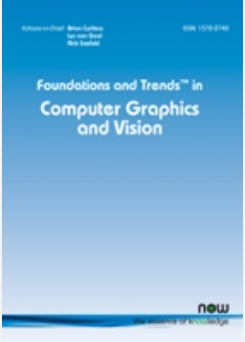视觉识别的领域自适应
IF 9.3
Q2 COMPUTER SCIENCE, INTERDISCIPLINARY APPLICATIONS
引用次数: 35
摘要
领域适应是一个活跃的新兴研究领域,试图解决跨训练和测试数据集的数据分布变化。随着大量图像采集传感器的可用性,由于光照和视点等因素的变化,计算机视觉应用为评估领域自适应方法提供了一个非常自然的测试平台。在这本专著中,我们提供了视觉识别问题的领域自适应解决方案的全面概述。从问题描述和插图开始,我们讨论了三种自适应场景,即无监督自适应,其中“源域”训练数据部分标记,“目标域”测试数据未标记;半监督自适应,其中目标域也有部分标签;三是多域异构自适应,它研究了前两种情况,即源和/或目标具有多个域,并考虑了用于表示每个域的数据的特征不同的情况。对于所有这些主题,我们讨论了文献中现有的自适应技术,这些技术是由最大边际判别学习、流形学习、稀疏编码以及低秩表示的原则驱动的。这些技术在物体识别、人脸识别、活动分析、概念分类和人员检测等各种应用中都显示出改进的性能。最后,我们分析了“大视觉数据”领域所面临的挑战,即自适应算法对无约束数据采集的泛化能力以及与计算可追溯性相关的问题,并与视觉界在图像变换模型和不变描述符方面的努力进行了比较,以促进对不确定性下视觉问题的更好理解。本文章由计算机程序翻译,如有差异,请以英文原文为准。
Domain Adaptation for Visual Recognition
Domain adaptation is an active, emerging research area that attemptsto address the changes in data distribution across training and testingdatasets. With the availability of a multitude of image acquisition sensors,variations due to illumination, and viewpoint among others, computervision applications present a very natural test bed for evaluatingdomain adaptation methods. In this monograph, we provide a comprehensiveoverview of domain adaptation solutions for visual recognitionproblems. By starting with the problem description and illustrations,we discuss three adaptation scenarios namely, i unsupervised adaptationwhere the "source domain" training data is partially labeledand the "target domain" test data is unlabeled, ii semi-supervisedadaptation where the target domain also has partial labels, and iiimulti-domain heterogeneous adaptation which studies the previous twosettings with the source and/or target having more than one domain,and accounts for cases where the features used to represent the datain each domain are different. For all these topics we discuss existingadaptation techniques in the literature, which are motivated by theprinciples of max-margin discriminative learning, manifold learning,sparse coding, as well as low-rank representations. These techniqueshave shown improved performance on a variety of applications suchas object recognition, face recognition, activity analysis, concept classification,and person detection. We then conclude by analyzing thechallenges posed by the realm of "big visual data", in terms of thegeneralization ability of adaptation algorithms to unconstrained dataacquisition as well as issues related to their computational tractability,and draw parallels with the efforts from vision community on imagetransformation models, and invariant descriptors so as to facilitate improvedunderstanding of vision problems under uncertainty.
求助全文
通过发布文献求助,成功后即可免费获取论文全文。
去求助
来源期刊

Foundations and Trends in Computer Graphics and Vision
COMPUTER SCIENCE, INTERDISCIPLINARY APPLICATIONS-
CiteScore
31.20
自引率
0.00%
发文量
1
期刊介绍:
The growth in all aspects of research in the last decade has led to a multitude of new publications and an exponential increase in published research. Finding a way through the excellent existing literature and keeping up to date has become a major time-consuming problem. Electronic publishing has given researchers instant access to more articles than ever before. But which articles are the essential ones that should be read to understand and keep abreast with developments of any topic? To address this problem Foundations and Trends® in Computer Graphics and Vision publishes high-quality survey and tutorial monographs of the field.
Each issue of Foundations and Trends® in Computer Graphics and Vision comprises a 50-100 page monograph written by research leaders in the field. Monographs that give tutorial coverage of subjects, research retrospectives as well as survey papers that offer state-of-the-art reviews fall within the scope of the journal.
 求助内容:
求助内容: 应助结果提醒方式:
应助结果提醒方式:


